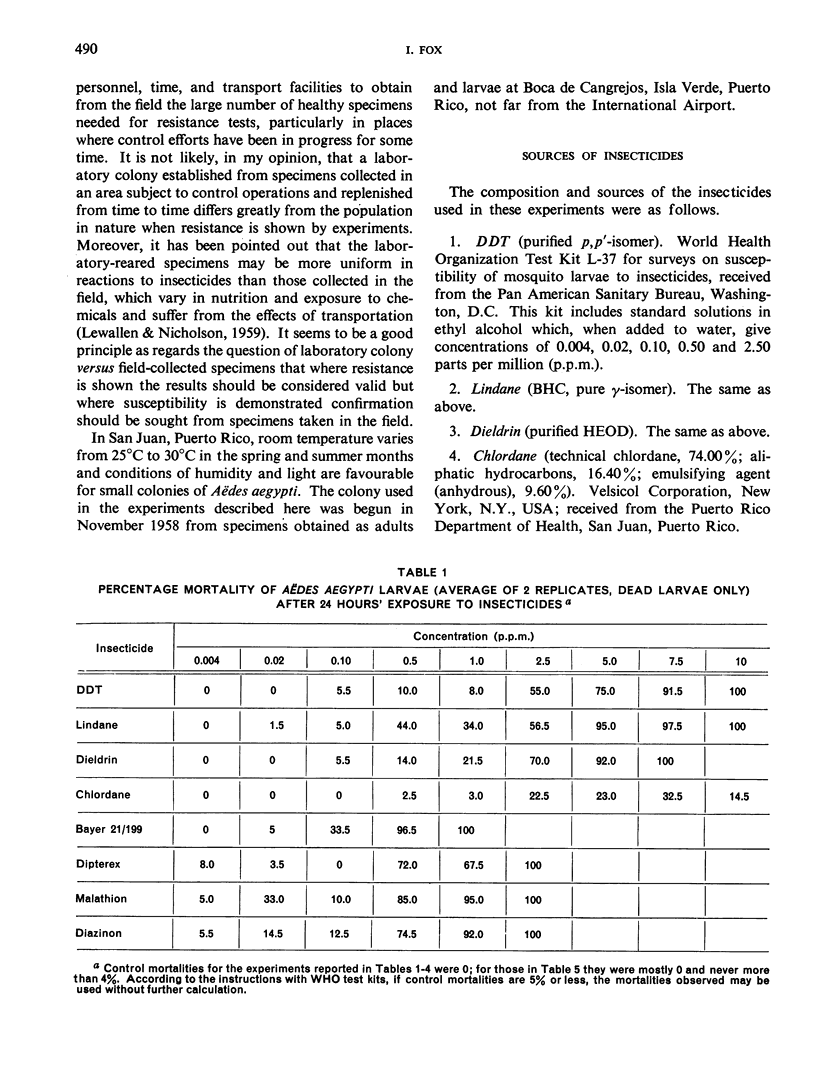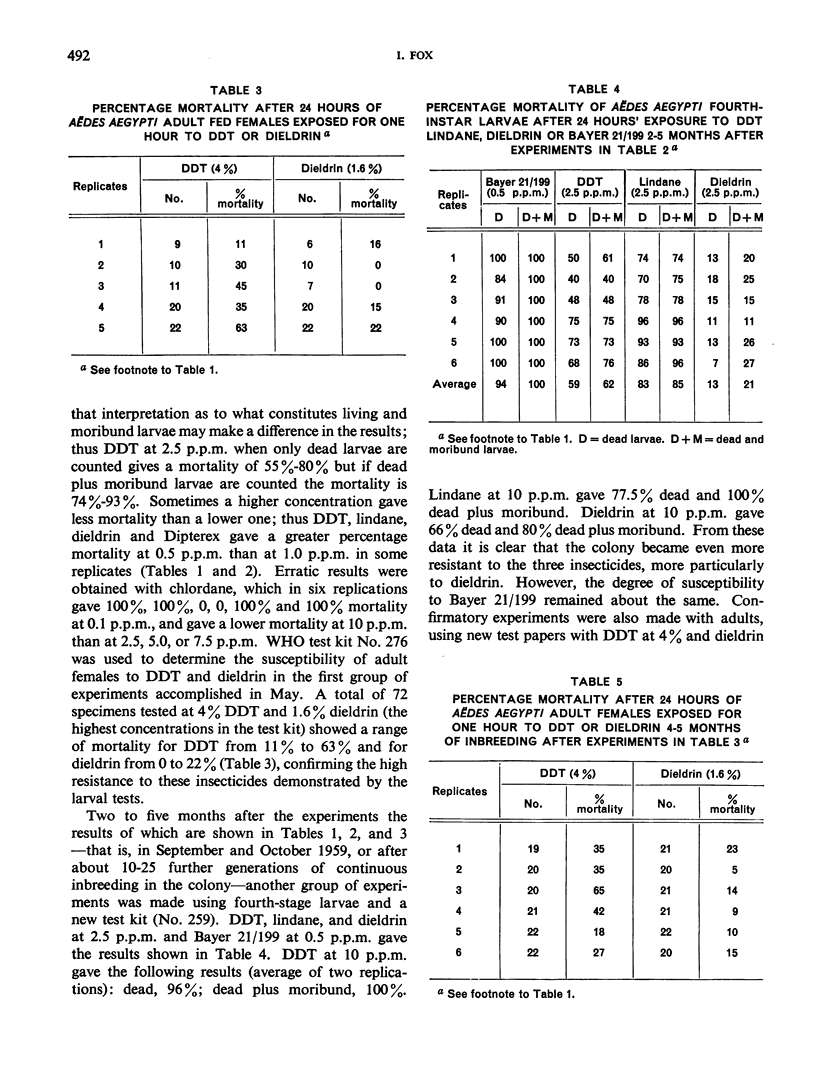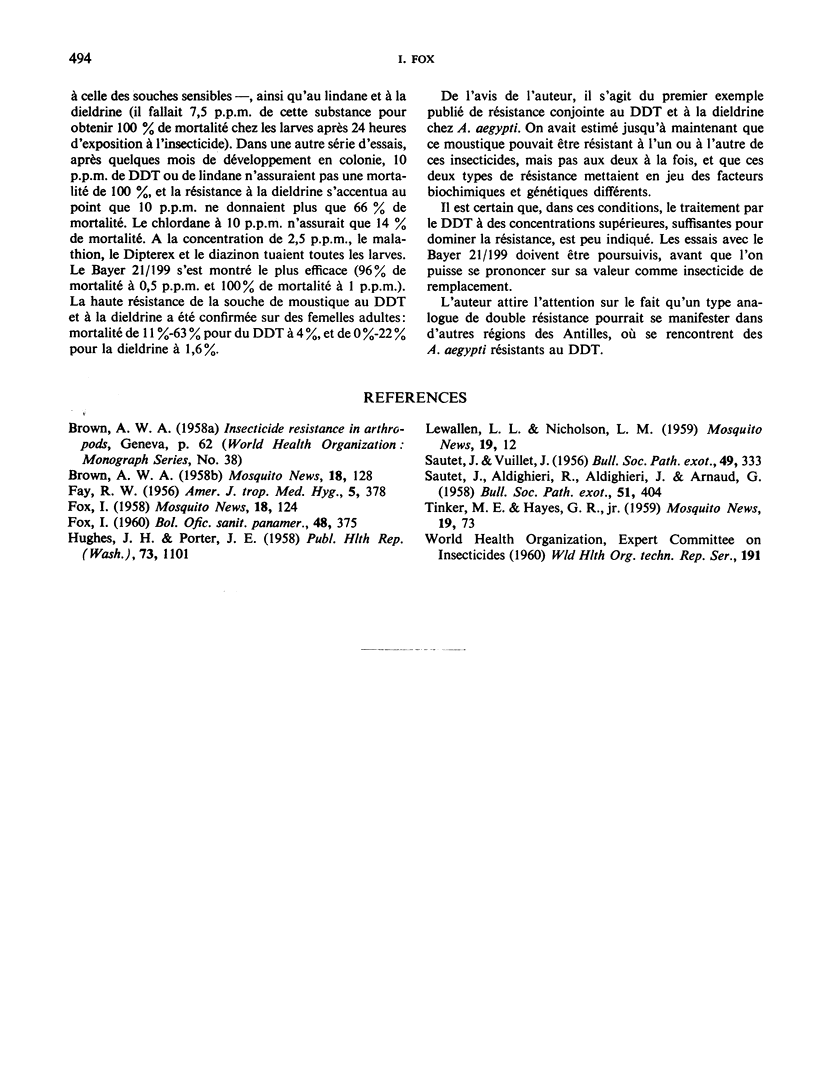Abstract
Failure to control Aëdes aegypti in Puerto Rico has suggested resistance to the insecticides, particularly DDT. A laboratory colony (named Isla Verde strain) was established from material obtained near the International Airport. This strain proved highly resistant to DDT and dieldrin as well as various other insecticides. The scientific and practical significance of this is far-reaching. Heretofore, it was thought that populations of Aëdes aegypti could be resistant to the DDT group of insecticides or to the dieldrin group but not to both, and that one type of resistance involved biochemical, toxicological and genetic characteristics different from the other. This theory must now be modified or even abandoned. From the practical point of view, it is clear that the continued use of DDT or dieldrin for Aëdes aegypti control in Puerto Rico is questionable, for it is not wise to attempt to overcome high resistance by increasing the concentration or rate of application. Further, the situation demonstrated for Puerto Rico may also obtain in other islands of the Caribbean where Aëdes aegypti is known to be DDT-resistant.
Full text
PDF





Selected References
These references are in PubMed. This may not be the complete list of references from this article.
- FOX I. [Resistance of Aedes aegypti to certain chlorinated hydrocarbon and organophosphorus insecticides in Puerto Rico]. Bol Oficina Sanit Panam. 1960 May;48:375–382. [PubMed] [Google Scholar]
- SAUTET J., ALDIGHIERI R., ALDIGHIERI J., ARNAUD G. Comparaison de la sensibilité au D. D. T. des adultes de plusieurs souches d'Aedes aegypti. Bull Soc Pathol Exot Filiales. 1958 May-Jun;51(3):404–412. [PubMed] [Google Scholar]
- SAUTET J., VUILLET J. Sensibilité des larves de deux souches d'Aedes aegypti aux insecticides chlorés. Bull Soc Pathol Exot Filiales. 1956 Mar-Apr;49(2):333–335. [PubMed] [Google Scholar]


